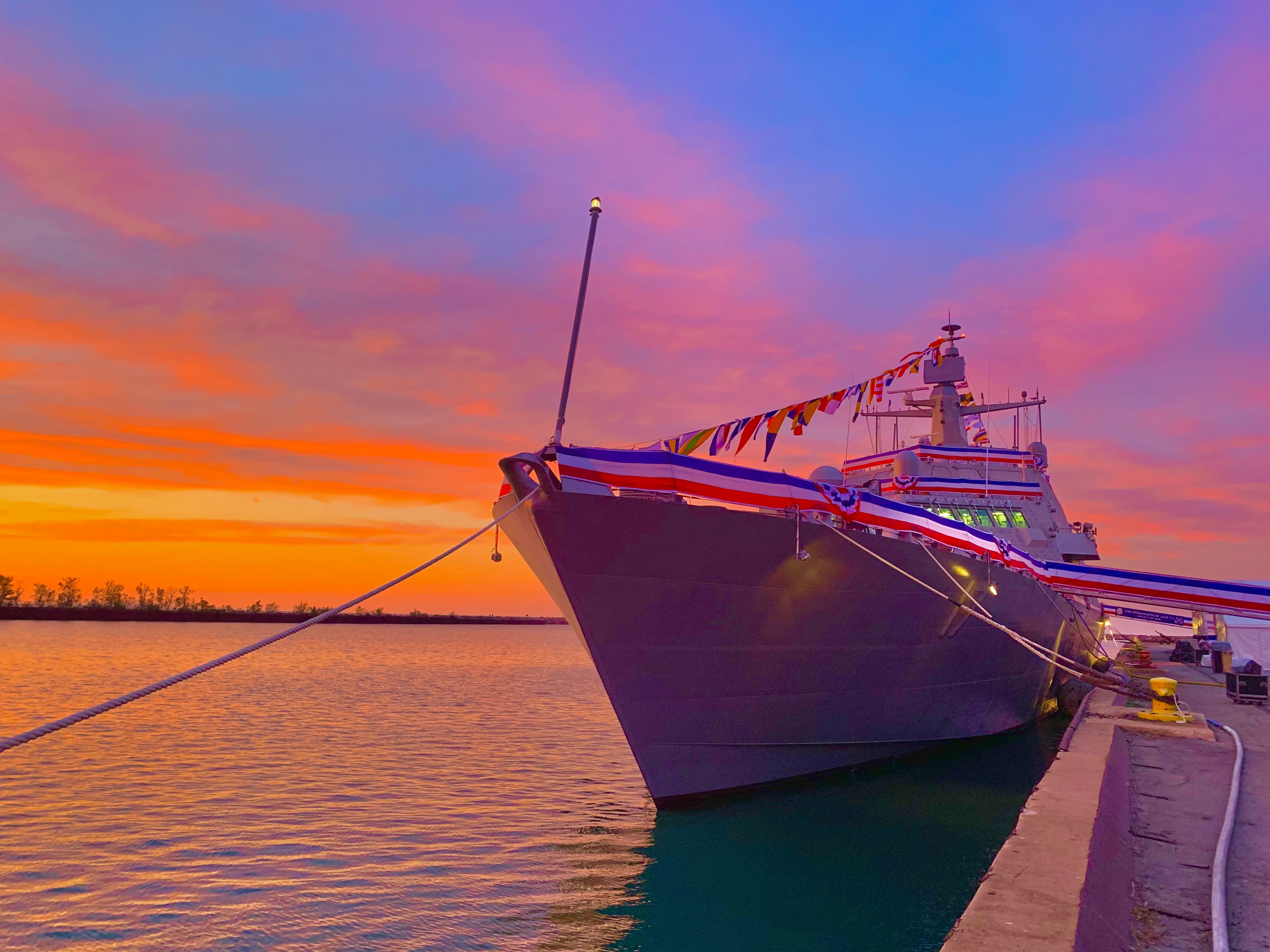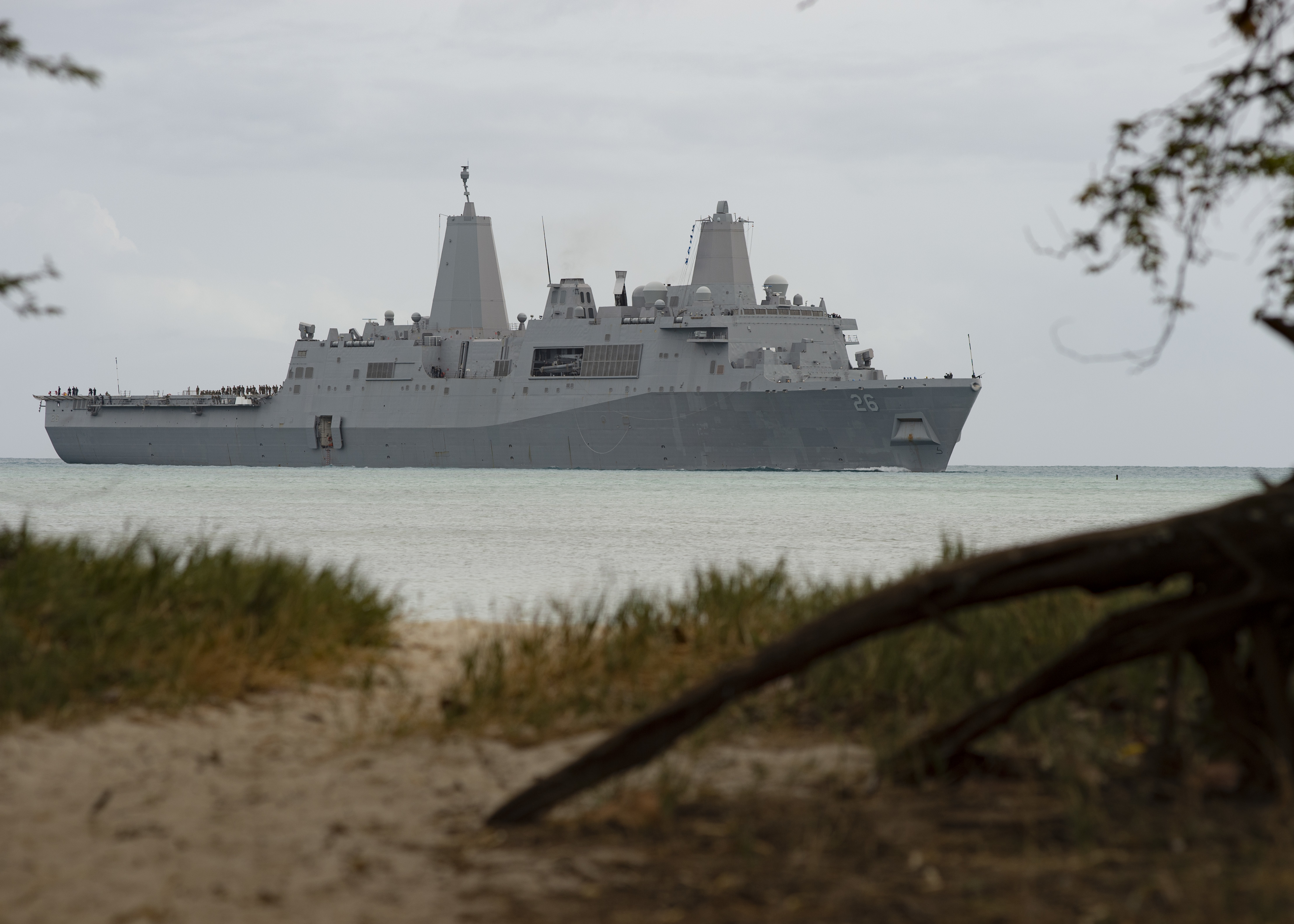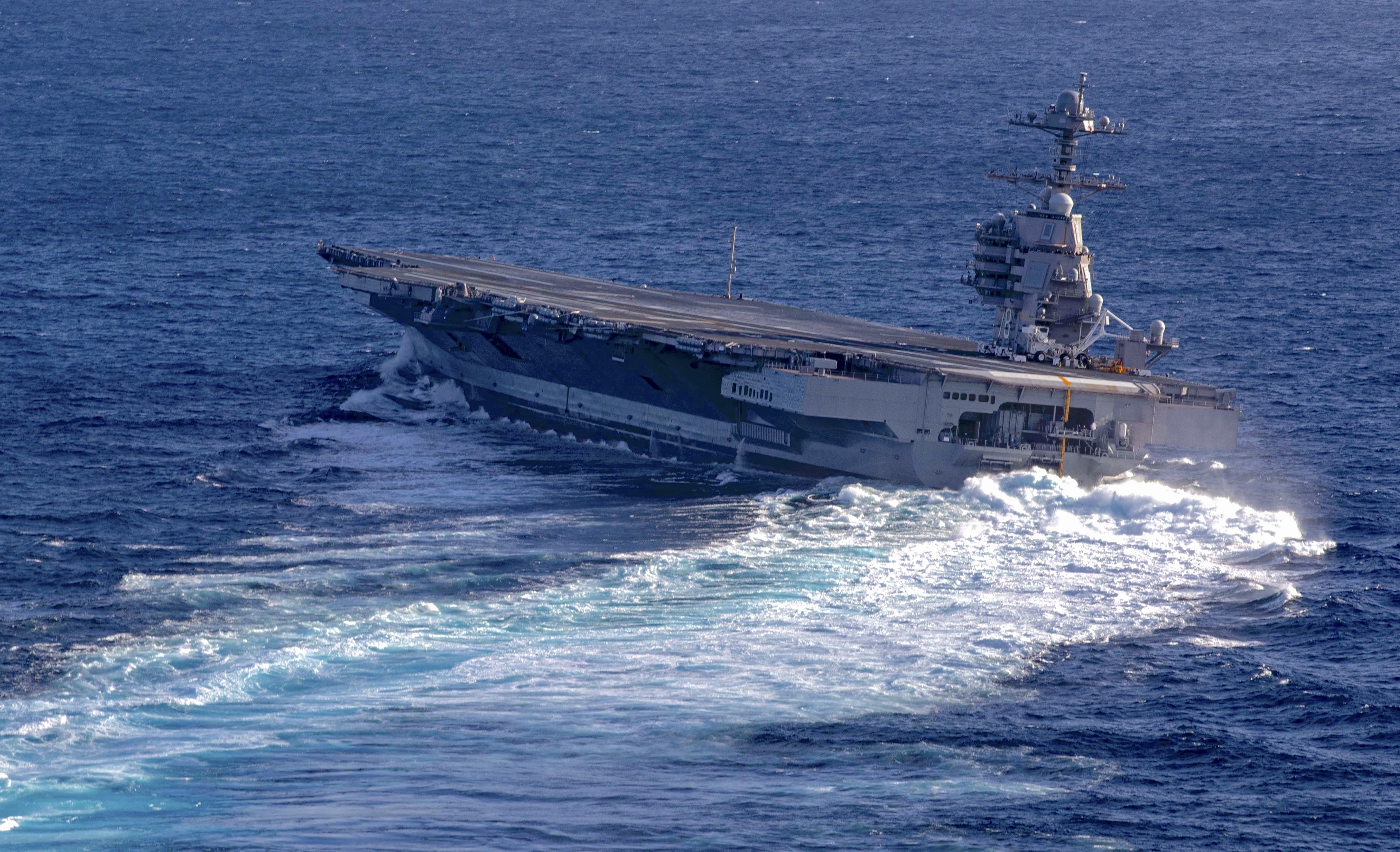
WASHINGTON, D.C. – The Navy and industry are still facing a lot of unknowns during a “dynamic” conversation about what ships to build and how to best support future operations, leaders said today.
What they do know, Acting Secretary of the Navy Thomas Modly said, is that the current plans for force size and mix are not right. What they don’t know, even as a new integrated naval force structure assessment is set to wrap up by the end of the month, is where exactly they want to be headed.
“We have a goal of 355. We don’t have a plan for 355, and we need to get a plan for it. If it’s not 355, what’s it going to be? What’s it going to look like?” Modly said while speaking at the U.S. Naval Institute’s annual Defense Forum Washington event.
“Everything was based around the 2016 force structure assessment, which said that we needed basically 12 carriers, 104 large surface combatants, 52 smalls, and everything derivative from that. I’m not sure if that’s the right force mix anymore. And we need to look at that, and that’s what we’re doing.”
Chief of Naval Operations Adm. Mike Gilday, too, expressed dissatisfaction with the current fleet design.
“The fleet’s too small. Our capabilities are stacked onto too few ships that are too big, and that needs to change over time,” he said at the Naval Institute event, noting in particular a reliance on “two-billion-dollar ships wrapped around 96 missile tubes” – a reference to the newest Arleigh Burke-class destroyers in the fleet – that will need to change for the Navy to be successful in a contested environment that calls for the Distributed Maritime Operations concept.
Still, even if they know today’s plans aren’t right, few could say for certain what “right” will look like in the future fleet. To some degree, the design of future combatants, aircraft carriers, submarines, logistics ships and more will be determined by wargaming and modeling and simulation tools; they’ll likely be further refined by detailed conversations between Navy and Marine Corps requirements officers, budgeters and engineers and industry representatives.

Vice Adm. Jim Kilby, the deputy chief of naval operations for warfighting requirements and capabilities (OPNAV N9), said during a panel presentation at the event that the Navy had successfully used this approach for the frigate, which allowed the Navy to best balance cost and capability and “which allows industry to then get ahead of that pivot to anticipate what’s coming; it’s not a big reveal at the end.”
He promoted using this process, called a requirements evaluation team, for other upcoming ship design and acquisition efforts – chiefly the large surface combatant effort, which would provide an opportunity to move beyond Gilday’s description of today’s destroyer.
Kilby said another way to satisfy Gilday’s criticism of the DDGs is through unmanned surface vessels. He said the Large USV will be used as an adjunct magazine to supplement destroyers, with captains of Aegis combatants using up the LUSV’s magazine first with their targeting data and saving their own supply of munitions for when the LUSV needs to leave the battle to rearm and resupply. He said this model would “prolong my ability to stay in the fight and maneuver,” but Kilby made clear the conversation can’t stop there.
“I think we have to be thoughtful and look at opportunities and not say, no, we figured out the right answer, it’s an LUSV and an MUSV, pens down, we’re done. I think we continually have to pressurize ourselves to say, how much does that cost, is it affordable, is it attritable, is there a better way to do this, how does it fit into our war plan, and modify, modify, modify.”
He suggested that acquiring manned and unmanned systems in blocks, to allow for capability insertions in each new block, would be an ideal approach to ensure the fleet is ever-evolving to keep up with threats and keep up with concepts of operations.
Mike Petters, the president and chief executive of Huntington Ingalls Industries – whose Newport News Shipbuilding yard builds all the carriers and components of all submarines, and whose Ingalls Shipbuilding yard builds all amphibious ships and half the destroyers – noted it was a “dynamic environment” for shipbuilding and ship design, as the CNO looks to move away from reliance on traditional destroyers and Commandant of the Marine Corps Gen. David Berger looks to change the face of the amphib fleet with the addition of less exquisite amphibious or alternate ships to move Marines around.

Still, Petters said during the panel that he’s not worried about his yards keeping up with changes the Navy may make to its fleet architecture and ship design preferences.
“At our shipyard in Newport News, over half of the workforce has less than three years of experience,” he said, saying Newport News Shipbuilding is doing now what much of the shipbuilding industry will be doing in the coming years: replacing master shipbuilders with green workers as a wave of experienced personnel hit retirement.
“So when we start talking about left turns – we’re not going to build this ship because we’re going to build that ship – well, my view is that I can actually have my workforce and my team ready to do that faster than you can make that decision, and I can absolutely do it faster than the appropriators could appropriate. So I’m just not too concerned about the ability of the industry to respond dynamically to whatever it is we want to do,” he said, with a new workforce capable of leveraging digital design and construction tools and ready to learn their skills on whatever kind of ship the Navy wants to buy.
“We have new tools, we have lots of different things inside the industry to allow us to be agile enough to be responsive; but we need to find the language that allows us room to do that,” Petters said, calling for a conversation about how to accept risk in shipbuilding programs if the Navy wants industry to deliver ships quickly to meet evolving needs.
Ron O’Rourke, naval affairs analyst for the Congressional Research Service, said during the panel that the military had, during an era of relatively uncontested operations, shifted towards a demand for “zero-defect acquisition,” meaning there were no cost increases, no schedule delays and no testing hiccups. Today, with peer competitors rapidly developing new technology, the U.S. too needs to acquire platforms and weapons at the “speed of relevance” – even if it means adding technical risk to the program – instead of asking for a zero-risk program that’s too slow to have any significant impact on the battlefield.

Noting that a generational shift is coming to what kinds of ships and connectors the Navy and Marine Corps plan to buy, O’Rourke said the mix of ships will change and therefore the balance of work across large and small shipbuilders may change.
“If we are moving towards a change of that scale and with so many dimensions to it, what are some of the things that we can try to keep in mind as we launch into that? One is to work expeditiously to reveal what the new architecture is sooner rather than later so help clarify for industry what the new picture looks like sooner rather than later, so that they have more time to prepare for it,” he said, noting the first naval integrated FSA is due out soon but may not be reflected in budget plans until Fiscal Year 2022 or 2023.
“Second, if you’re going to build a new mix of ships, we can maybe also turn to industry and say, well, if we’re building a new combination of platforms, is there in fact a new way to build them compared to the way that we have been building them?” he continued.
“If we’re going to build a different combination of ships, it may not be best to do it in the same old way that we’ve been building the previous architecture.”





